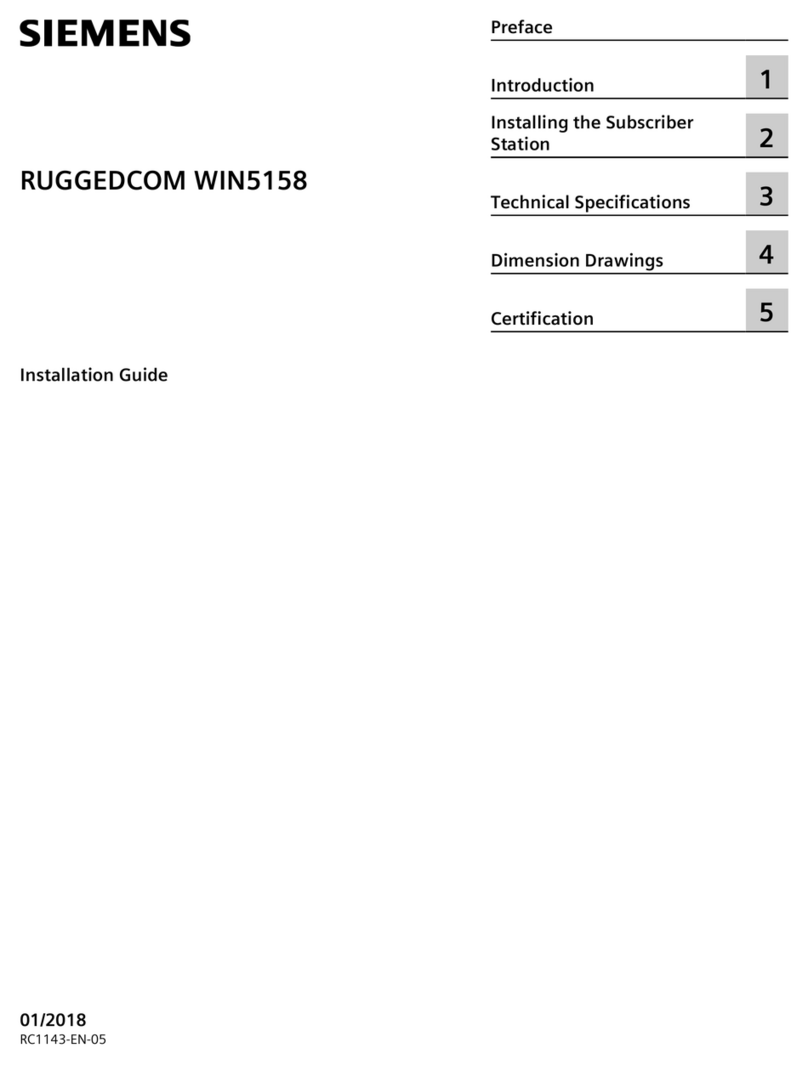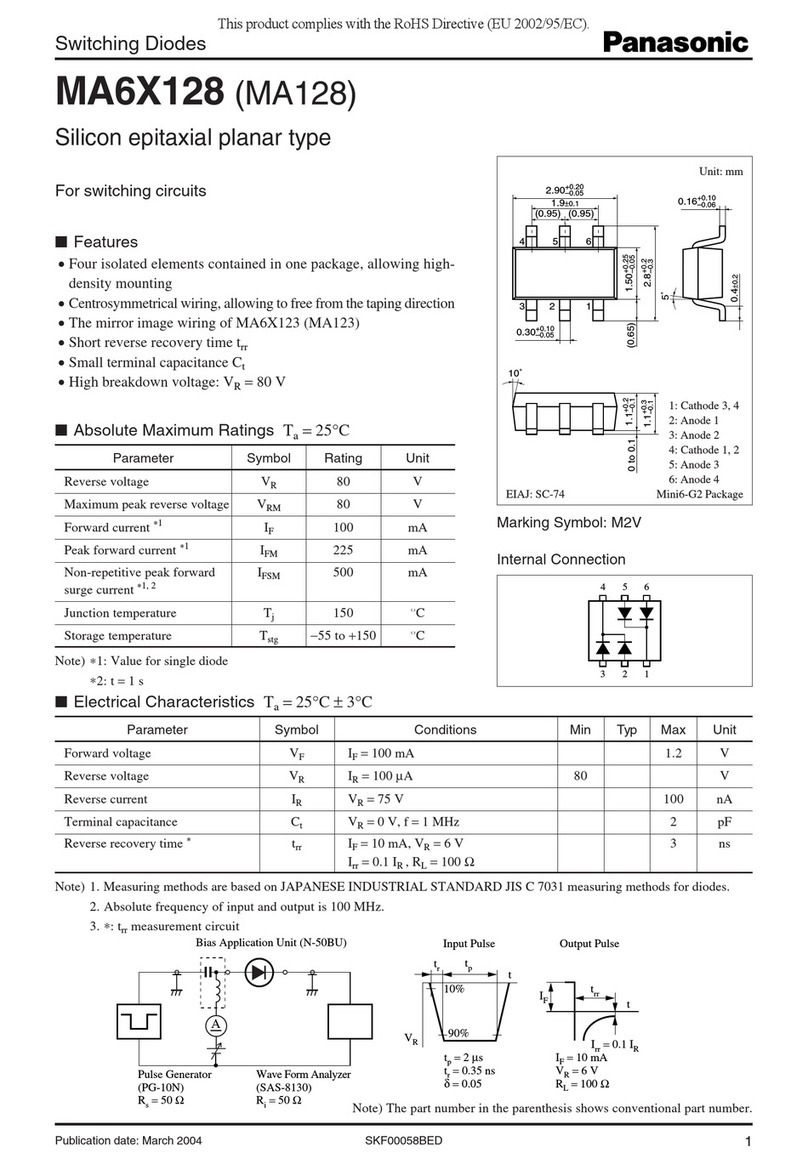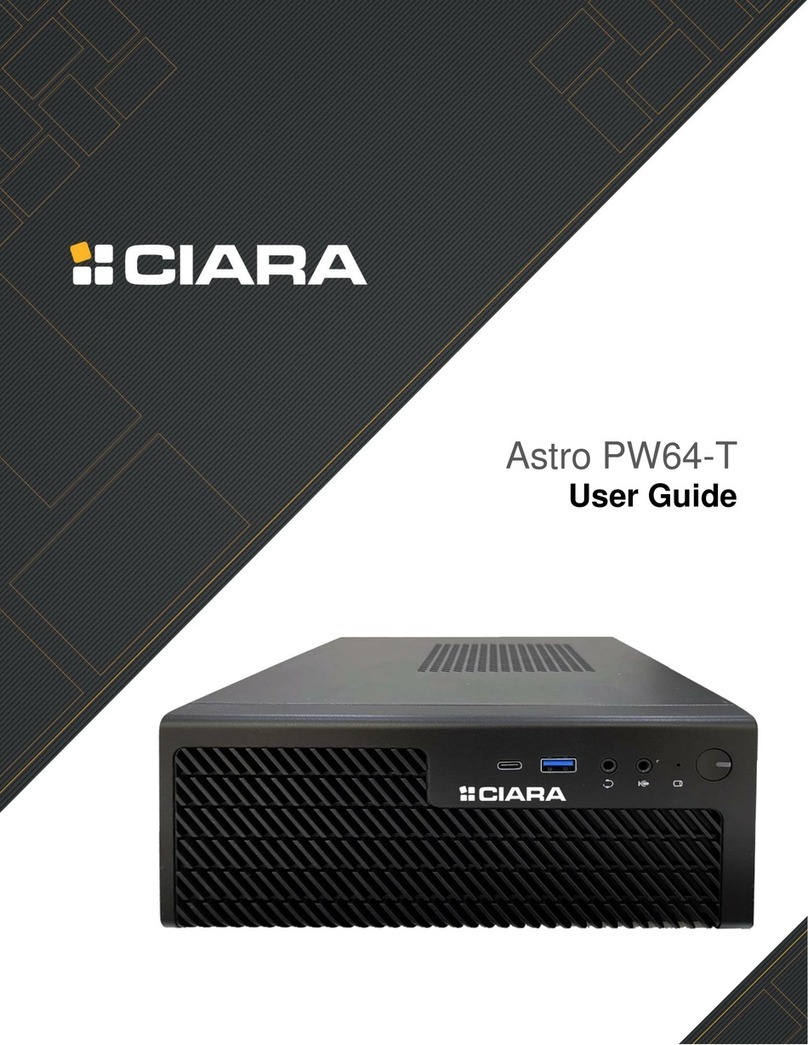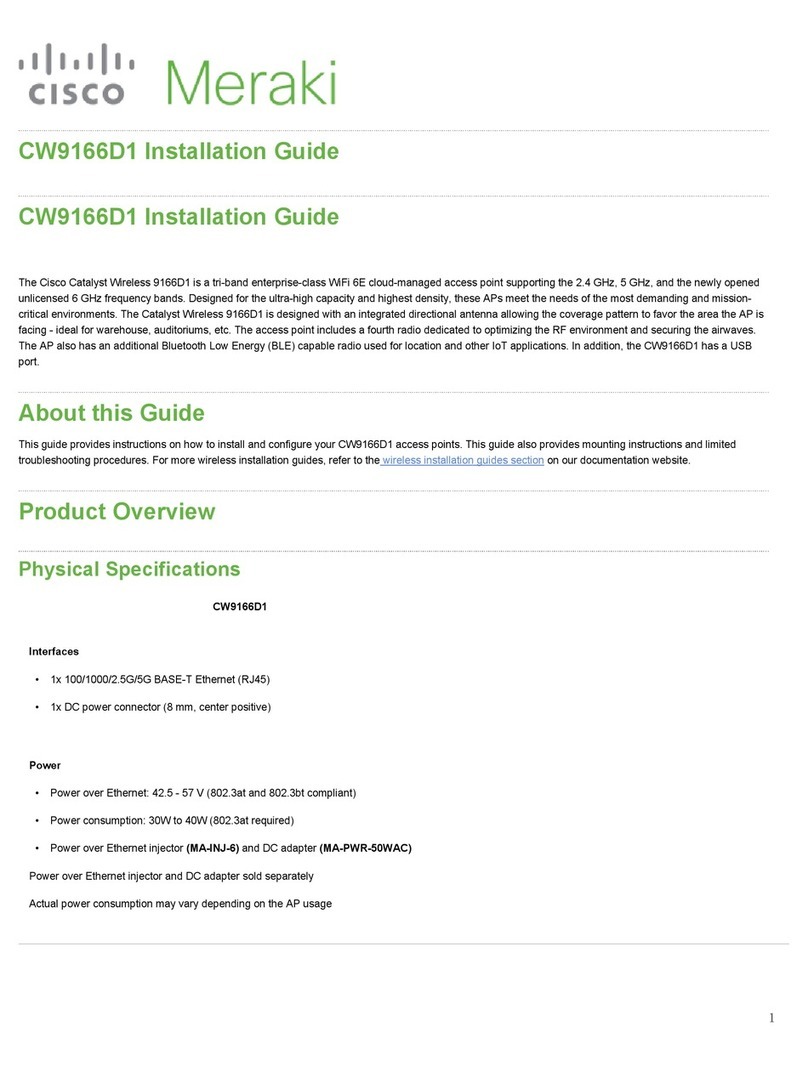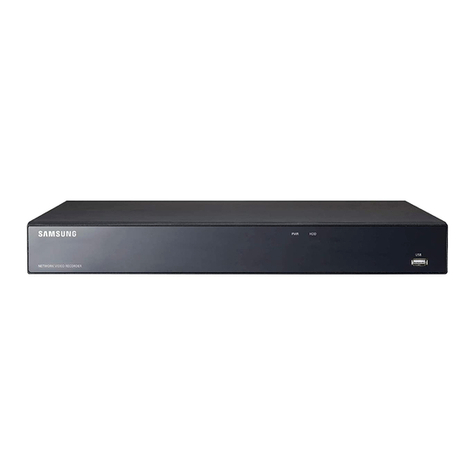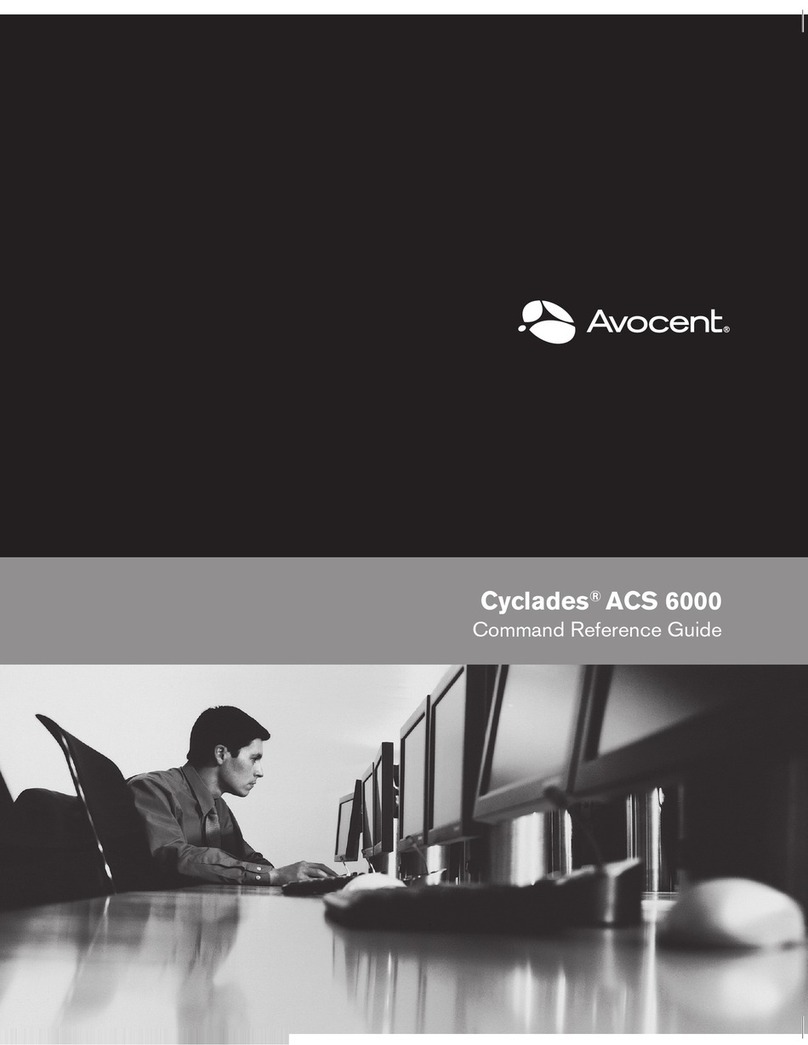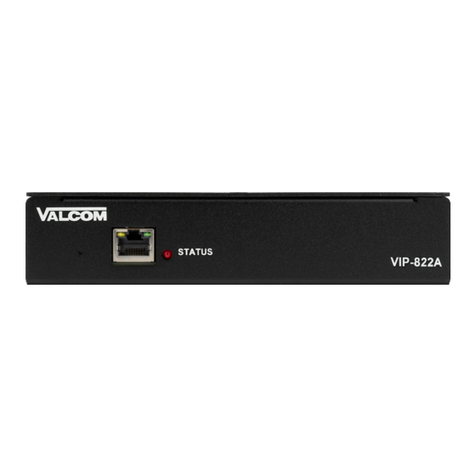Harmonic HLP 4800 User manual

HLP 4800 Platform
User’s Guide
VERSION 1.0
Rev A
Manual Part No. 700-0052028

© 2009 Harmonic Inc. All rights reserved.
Disclaimer
Harmonic reserves the right to alter the equipment specifications and descriptions in this publication without prior notice. No part of
this publication shall be deemed to be part of any contract or warranty unless specifically incorporated by reference into such
contract or warranty. The information contained herein is merely descriptive in nature, and does not constitute a binding offer for
sale of the product described herein. Harmonic assumes no responsibility or liability arising from the use of the products described
herein, except as expressly agreed to in writing by Harmonic. The use and purchase of this product do not convey a license under
any patent rights, copyrights, trademark rights, or any intellectual property rights of Harmonic. Nothing hereunder constitutes a
representation or warranty that using any products in the manner described herein will not infringe any patents of third parties.
Trademark Acknowledgments
Harmonic and all Harmonic product names are trademarks of Harmonic Inc. All other trademarks are the property of their respective
owners.
Compliance and Approval
This equipment has been tested and found to comply with the limits for a Class A digital device, pursuant to Part 15, Subpart B of the
Federal Communications Commission (FCC) rules.
These limits are designed to provide reasonable protection against harmful interference when the equipment is operated in a
commercial environment.
This equipment generates, uses, and can radiate radio frequency energy. It may cause harmful interference to radio communications
if it is not installed and used in accordance with the instructions in this manual. Operation of this equipment in a residential area is
likely to cause harmful interference. If this occurs, the user will be required to correct the interference at his or her own expense.
This device complies with Part 15 of the FCC rules. Operation is subject to the following two conditions: (1) this device may not
cause harmful interference, and (2) this device must accept any interference received, including interference that may cause
undesired operation.
Connections between the Harmonic equipment and other equipment must be made in a manner that is consistent with maintaining
compliance with FCC radio frequency emission limits. Modifications to this equipment not expressly approved by Harmonic may
void the authority granted to the user by the FCC to operate this equipment.
Compliance with 21CFR 1040 and 1040.10
Complies with 21 CFR 1040.10 and 1040 except for deviations pursuant to Laser Notice No. 50, dated June 24, 2007.
When you work with this equipment, take the following precautions:
Use of controls or adjustments or performance of procedures other than those specified herein may result in hazardous radiation
exposure.
Never look at an optical fiber using a direct magnification fiber scope without verifying that all lightwave sources on the fiber are
turned off.
Never look directly into an optical connector.
Install protective covers or caps over connectors when they are not being used.
Always assume that exposed optical connectors and cables are energized.

© 2009 Harmonic Inc. All rights reserved.
Always make an optical power measurement of the fiber or connector before cleaning or
Lorsque vous travaillez avec ce matériel, prenez les précautions suivantes:
L’utilisation de commandes ou de réglages ou l’utilisation de procédures autres que celles décrites dans ce manuel d’utilisation
peut générer une exposition á des radiations dangeureuses.
Ne jamais regarder une fibre optique directement avec un outil d’inspection de fibres sans verifier que toutes les sources
lumineuses dans la fibres sont éteintes.
Ne jamais regarder directement á un connecteur de fibre optique.
Installer les bouchons protecteurs sur les connecteurs qui ne sont pas utilisés.
Toujours supposer qu’un connecteur éxposé ou une fibre optique émettent de l’énergie lumineuse.
Toujours mesurer la puissance optique d’une fibre optique ou d’un connecteur avant de le nettoyer une inspection visuelle pour
s’assurer que la fibre n’émet pas d’énergie lumineuse.
Beim Arbeiten mit diesem Gerät, beachten Sie die folgenden Vorsichtsmaßnahmen:
Die Verwendung von Reglern oder Einstellungen sowie die Durchführung von Verfahren die hier nicht beschrieben sind kann dazu
führen das Sie gefährlicher Strahlung ausgesetzt werden.
Blicken Sie nie mit einem Lichtwellenleiter Microscope in einen Lichtwellenleiter, ohne zu prüfen, dass alle Laserquellen auf dem
Lichtwellenleiter deaktiviert sind.
Blicken Sie nie direkt in einen optischen Anschluss.
Installieren Sie Schutzabdeckungen oder Kappen über Lichtwellenleiteranschlüssen, wenn sie nicht verwendet werden.
Gehen Sie immer davon aus, dass optische Anschlüsse und Kabel aktiv sind.
Fuehren Sie immer eine optische Messung am Lichtwellenleiter oder Stecker durch bevor Sie einen optischen Anschluss reinigen oder inspizieren, um
sicherzustellen, dass er nicht aktiv ist.
Power Supply Cord Notice
CAUTION — This unit has more than one power supply connection; all connections must be removed to remove all power from the
unit.
ATTENTION — Cette unité est équipée de plusieurs raccordements d'alimentation. Pour supprimer tout courant électrique de l'unité,
tous les cordons d'alimentation doivent être débranchés
WARNUNG — Diese Einheit verfügt über mehr als einen Stromanschluß; um Strom gänzlich von der Einheit fernzuhalten, müssen
alle Stromzufuhren abgetrennt sein
CAUTION — The power supply cord is used as the main disconnect device, ensure that the socket outlet is located/installed near
the equipment and is easily accessible.
ACHTUNG — Zur sicheren Trennung des Gerätes vom Netz ist der Netzstecker zu ziehen. Vergewissern Sie sich, daß die Steckdose
leicht zugänglich ist.
ATTENTION — Le cordon d’alimentation est utilisé comme interrupteur général. La prise decourant doit être située ou installée à
proximité du materiél et être facile d’accés.
AC Version
WARNING — This product relies on the building's installation for short-circuit (overcurrent) protection. Ensure that a fuse or circuit
breaker no larger than 120 VAC, 15A U.S. (240 VAC, 10A international) is used on the phase conductors (all current-carrying
conductors).
ATTENTION — Pour ce qui est de la protection contre les courts-circuits (surtension), ce produit dépend de l'installation électrique
du local. Vérifier qu'un fusible ou qu'un disjoncteur de 120 V alt., 15 A U.S. maximum (240 V alt., 10 A international) est utilisé sur
les conducteurs de phase (conducteurs de charge).

© 2009 Harmonic Inc. All rights reserved.
WARNUNG — Dieses Produkt ist darauf angewiesen, daß im Gebäude ein Kurzschluß- bzw. Überstromschutz installiert ist. Stellen
Sie sicher, daß eine Sicherung oder ein Unterbrecher von nicht mehr als 240 V Wechselstrom, 10 A (bzw. in den USA 120 V
Wechselstrom, 15 A) an den Phasenleitern (allen stromführenden Leitern) verwendet wird.
DC Version
Warning: This product relies on the building's installation for short-circuit (overcurrent) protection. Ensure that a fuse or circuit
breaker no larger than 15A is used on the phase conductors (all current-carrying conductors).
Attention: Pour ce qui est de la protection contre les courts-circuits (surtension), ce produit dépend de l'installation électrique du
local. Vérifier qu'un fusible ou qu'un disjoncteur de 15A est utilisé sur les conducteurs de phase (conducteurs de charge).
Warnung: Dieses Produkt ist darauf angewiesen, daß im Gebäude ein Kurzschluß- bzw. Überstromschutz installiert ist. Stellen Sie
sicher, daß eine Sicherung oder ein Unterbrecher von nicht mehr 15A an den Phasenleitern (allen stromführenden Leitern)
verwendet wird.
Lithium Battery Notice
CAUTION — Danger of explosion if battery is replaced with incorrect type. Replace only with the same type recommended by the
manufacturer. Dispose of used batteries according to the manufacturer’s instructions.
ACHTUNG — Explosionsgefahr wenn die Battery in umgekehrter Polarität eingesetzt wird. Nur miteinem gleichen oder ähnlichen,
vom Hersteller empfohlenen Typ, ersetzen. Verbrauchte Batterien müssen per den Instructionen des Herstellers verwertet werden.
ATTENTION — Il y a danger d’explosion s’il a remplacement incorrect de la batterie. Remplacer uniquement avec une batterie du
meme type ou d’un type equivalent recommande par le constructeur. Mettre au rebut les batteries usagees conformement aux
instructions du fabricant.
Chassis Warning--Rack-Mounting and Servicing
WARNING —To prevent bodily injury when mounting or servicing this unit in a rack, you must take special precautions to ensure that
the system remains stable. The following guidelines are provided to ensure your safety:
This unit should be mounted at the bottom of the rack if it is the only unit in the rack.
When mounting this unit in a partially filled rack, load the rack from the bottom to the top with the heaviest component
at the bottom of the rack.
If the rack is provided with stabilizing devices, install the stabilizers before mounting or servicing the unit in the rack.
ATTENTION — Pour éviter toute blessure corporelle pendant les opérations de montage ou de réparation de cette unité en casier, il
convient de prendre des précautions spéciales afin de maintenir la stabilité du système. Les directives ci-dessous sont destinées à
assurer la protection du personnel :
Si cette unité constitue la seule unité montée en casier, elle doit être placée dans le bas.
Si cette unité est montée dans un casier partiellement rempli, charger le casier de bas en haut en plaçant l'élément le
plus lourd dans le bas.
Si le casier est équipé de dispositifs stabilisateurs, installer les stabilisateurs avant de monter ou de réparer l'unité en
casier.
WARNUNG — Zur Vermeidung von Körperverletzung beim Anbringen oder Warten dieser Einheit in einem Gestell müssen Sie
besondere Vorkehrungen treffen, um sicherzustellen, daß das System stabil bleibt. Die folgenden Richtlinien sollen zur
Gewährleistung Ihrer Sicherheit dienen:
Wenn diese Einheit die einzige im Gestell ist, sollte sie unten im Gestell angebracht werden.
Bei Anbringung dieser Einheit in einem zum Teil gefüllten Gestell ist das Gestell von unten nach oben zu laden, wobei
das schwerste Bauteil unten im Gestell anzubringen ist.
Wird das Gestell mit Stabilisierungszubehör geliefert, sind zuerst die Stabilisatoren zu installieren, bevor Sie die Einheit
im Gestell anbringen oder sie warten.

© 2009 Harmonic Inc. All rights reserved.
Precautions when operating the equipment rack:
Operating the unit in an equipment Rack, take the following precaution:
Make sure the ambient temperature around the unit (which may be higher than the room temperature) is within the limit
specified for the unit.
Make sure there is sufficient airflow around the unit.
Make sure electrical circuits are not overloaded – consider the nameplate rating of all the connected equipment, and
make sure you have over current protection.
Make sure the equipment is properly grounded.
Make sure no objects place on top of unit.

© 2009 Harmonic Inc. All rights reserved.
WEEE/RoHS Compliance Policy
Harmonic Inc. intends to comply fully with the European Union’s Directive 2002/96/EC as amended by Directive 2003/108/EC, on
Waste Electrical and Electronic Equipment, also known as “WEEE,” and Directive 2002/95/EC, as amended, on the Restriction of
use of Hazardous Substances, also known as “RoHS.”
Harmonic will ensure that product which cannot be reused will be recycled in compliance with the WEEE Directive. To that end,
users are advised that (1) Harmonic equipment is not to be discarded in household or office garbage, (2) Harmonic Inc. will pay the
freight for shipment of equipment to be disposed of if it is returned to Harmonic, (3) customers should call the normal RMA
telephone numbers to arrange for such shipment, and (4) for additional and updated information on this process customers may
consult the Harmonic website: http://harmonicinc.com/ah_weee_recycle.cfm.
Harmonic will ensure that its products will be either reused or recycled in compliance with the WEEE Directive. For the latest
information concerning Harmonic’s WEEE/RoHS Compliance Policy and its Recycling and Take-Back process, please visit our web
site.
产品中的有毒有害物质或元素的名称及含量表
Names and Contents of the Toxic and Hazardous Substances or Elements in the
Products if the Part is Present
该表显示哈雷公司产品中可能含有的有毒有害物质元配件的信息,除了来源于元配件供应商的物料成分资料,
亦来自其它相关的机构与资料。哈雷产品不一定使用这些元配件。
This table shows those components where hazardous substances may be found in Harmonic products based on, among other
things, material content information provided by third party suppliers. These components may or may not be part of the product.
除非特殊注明,哈雷公司产品的环保使用期限 均为 20 年。该环保使用期限的有效条件为:必须遵循该产品使
用手册的规定,对该产品进行使用或存储。
The Environmental Protective Use Period for Harmonic products is 20 years unless displayed otherwise on the product. The EPUP
period is valid only when the products are operated or stored as per the conditions specified in the product manual.
部件名称 (Part name) 有毒有害物质或元素 (Hazardous Substance)
铅
(PB) 汞
(Hg) 镉
(Cd) 六价铬
(CrVI) 多溴联苯
(PBB) 多溴二苯醚
(PBDE)
印刷线路板
(Printed Circuit Assemblies)
XOO O O O
机械组件
(Mechanical Subassemblies)
XOO O O O
光学组件
(Optical Subassemblies)
XOO O O O
电源
(Power Supplies)
XOO O O O

© 2009 Harmonic Inc. All rights reserved.
O: 表示在该部件的所有均质材料中,此类有毒有害物质的含量均小于 SJ/T11363-2006 标准所规定的限量。
O: Indicates the content of the toxic and hazardous substances at the homogeneous material level of the parts is below the limit
defined in SJ/T11363 2006 standard.
X: 表示至少在该部件的某一均质材料中,此类有毒有害物质的含量超出 SJ/T11363-2006 标准规定的限量。
X: Indicates that the content of the toxic and hazardous substances in at least one of the homogeneous materials of the parts is
above the limit defined in SJ/T11363 2006 standard.
缆线 / 线束
(Cables, harnesses)
XOO O O O
屏幕 / 显示器
(Screens, Monitors)
XOO O O O
金属零件
(Metal Parts)
OOO O O O
塑料 / 发泡材料
(Plastics, foams)
OOO O O O
电池
(Batteries)
XOO O O O
部件名称 (Part name) 有毒有害物质或元素 (Hazardous Substance)
铅
(PB) 汞
(Hg) 镉
(Cd) 六价铬
(CrVI) 多溴联苯
(PBB) 多溴二苯醚
(PBDE)

© 2009 Harmonic Inc. All rights reserved.
Standards
The following tables list regulatory standards and approvals:
North America
Europe
Japan
Australia and New Zealand
Standards
EMI: FCC Part 15, Subpart B, Class A, ICES-003, Issue 3, Class A
Safety: UL 60950-1, CSA C22.2 No 60950-1, 21 CFR 1040 (CDRH)
Standards
EMI/EMC: EN55022, EN55024, EN61000-3-2, EN61000-3-3
Safety: EN 60950-1, EN 60825-1
Standards
EMI: VCCI V-3 / 2007.04
Standards
EMI: AS/NZS-CISPR 22:2005

© 2009 Harmonic Inc. All rights reserved.
Documentation Conventions
This manual uses some special symbols and fonts to call your attention to important information. The
following symbols appear throughout this manual:
DANGER: The Danger symbol calls your attention to information that, if ignored, can cause physical
harm to you.
CAUTION: The Caution symbol calls your attention to information that, if ignored, can adversely affect
the performance of your Harmonic product, or that can make a procedure needlessly difficult.
LASER DANGER: The Laser symbol and the Danger alert call your attention to information about the
lasers in this product that, if ignored, can cause physical harm to you.
NOTE: The Note symbol calls your attention to additional information that you will benefit from
heeding. It may be used to call attention to an especially important piece of information you need, or it
may provide additional information that applies in only some carefully delineated circumstances.
TIP: The Tip symbol calls your attention to parenthetical information that is not necessary for performing
a given procedure, but which, if followed, might make the procedure or its subsequent steps easier,
smoother, or more efficient.
In addition to these symbols, this manual uses the following text conventions:
Data Entry: indicates text you enter at the keyboard.
User Interface: indicates a button to click, a menu item to select, or a key or key sequence
to press.
Screen Output: shows console output or other text that is displayed to you on a
computer screen.
Bold: indicates the definition of a new term.
Italics: used for emphasis, cross-references, and hyperlinked cross-references in online
documents.

Table of Contents
© 2009 Harmonic Inc. 10 HLP 4800, Version 1.0, Rev A
Table of Contents
Chapter 1 Preface
1.1 Overview of this Manual . . . . . . . . . . . . . . . . . . . . . . . . . . . . . . . . . . . . 11
Chapter 2 Overview
2.1 HLP 4800 Chassis . . . . . . . . . . . . . . . . . . . . . . . . . . . . . . . . . . . . . . . . 12
2.1.1 Front Panel Description . . . . . . . . . . . . . . . . . . . . . . . . . . . . . . . . . . . . 12
2.1.2 Rear Panel Description . . . . . . . . . . . . . . . . . . . . . . . . . . . . . . . . . . . . 13
Chapter 3 Installing the HLP 4800 Platform
3.1 Tools and Accessories . . . . . . . . . . . . . . . . . . . . . . . . . . . . . . . . . . . . . 14
3.2 Receiving and Inspecting . . . . . . . . . . . . . . . . . . . . . . . . . . . . . . . . . . . 14
3.3 Mounting the Unit in the Rack . . . . . . . . . . . . . . . . . . . . . . . . . . . . . . . 14
3.3.1 Connecting the Grounding Lugs . . . . . . . . . . . . . . . . . . . . . . . . . . . . 15
3.4 Power Requirements. . . . . . . . . . . . . . . . . . . . . . . . . . . . . . . . . . . . . . . 15
3.4.1 Connecting an External 24 VDC Power Source . . . . . . . . . . . . . . . . 15
3.5 Connecting the Alarm Relay . . . . . . . . . . . . . . . . . . . . . . . . . . . . . . . . 15
Chapter 4 Maintenance and Troubleshooting
4.1 Maintenance . . . . . . . . . . . . . . . . . . . . . . . . . . . . . . . . . . . . . . . . . . . . . 17
4.2 Contacting Harmonic Support . . . . . . . . . . . . . . . . . . . . . . . . . . . . . . . 17
Appendix A Technical Specifications
A.1 HLP 4800 Technical specifications: . . . . . . . . . . . . . . . . . . . . . . . . . . 18

© 2009 Harmonic Inc. 11 HLP 4800, Version 1.0, Rev A
Chapter 1
Preface
1.1 Overview of this Manual
This manual is the user’s guide to the HLP 4800 Platform. Please read the entire document
before beginning installation.
HLP 4800 Platform. Please read the entire document before beginning installation or
operation.
Chapter 1, Preface, (this chapter) gives an overview of the book.
Chapter 2, Overview, gives an overview of the HLP 4800.
Chapter 3, Installing the HLP 4800 Platform, describes the installation procedure.
Chapter 4, Maintenance and Troubleshooting, has information about maintenance and
how to contact Harmonic, Inc.
Appendix A, Technical Specifications has a table of specifications for the HLP 4800.

© 2009 Harmonic Inc. 12 HLP 4800, Version 1.0, Rev A
Chapter 2
Overview
The HLP 4800 is Harmonic’s new flexible platform for mounting broadband communications
equipment.
The HLP 4800 Platform is used with a number of plug-in modules, such as the PWRLinkTM
series of 1310 nm laser transmitters and the SUPRALinkTM series of 1550 nm DWDM laser
transmitters and optical amplifier, as well as the HRM3811 receiver, the METROLinkTM series
of 1550nm narrowcast DWDM transmitters, and optical switches.
The new HLP 4800 Platform is designed to meet the economic and technical requirements of
broadband service providers. The modular design of the product offers the user a number of
advantages, including:
The flexibility to add plug-in modules as industry requirements change, without the need
to replace equipment shelves, power supplies or status monitoring equipment.
The economic advantage of maintaining spare plug-in modules rather than entire
subsystems.
Reduced network downtime because of plug-in module replacements.
2.1 HLP 4800 Chassis
The HLP 4800 is a rack-mount platform, three rack units in height, designed to be fitted to a
19-inch EIA standard rack flange. It will accommodate ten of Harmonic’s standard 1.3 inch
wide plug-in modules, using appropriate carriers. A typical configuration would contain one
or two CPS 4800 power supply modules, one HNC4800 controller with display and keypad,
as well as other Harmonic modules.
Controlling and monitoring of the HLP 4800 and modules is accomplished by the following
means:
Local control and monitoring using the momentary push buttons and forty character
display on the front panel of the HNC 4800
Remote control and monitoring by means of license enabled WEB/SNMP RJ-45 Ethernet
interface on the rear of the HNC 4800.
The forty-character display on the platform front panel provides the following:
Name and slot position of each module contained within the Platform.
Network address setting.
Control and diagnostic menus for each module in the Platform.
2.1.1 Front Panel Description
Figure 2-1 on page 13 shows the HLP 4800 front panel features and locations.

Chapter 2 Overview HLP 4800 Chassis
© 2009 Harmonic Inc. 13 HLP 4800, Version 1.0, Rev A
Figure 2-1: Front panel HLP 4800
2.1.2 Rear Panel Description
Figure 2-2 on page 13 shows the HLP 4800 rear panel features and locations.
Figure 2-2: Rear panel, HLP 4800
HNC 4800 Controller Display
Five carrier slots for up to ten modules
Provides status of plug-in modules
using a 40-character display
Five push-
button keys:
- ESC
- SET
- Down
- Up
- Enter
Dual power supplies Ground jack
RJ-11 (reserved for future use) Alarm relay Dual ground lug 10-32 UNC
+24v DC backup

© 2009 Harmonic Inc. 14 HLP 4800, Version 1.0, Rev A
Chapter 3
Installing the HLP 4800 Platform
This chapter provides the information necessary to install the HLP 4800. Please read all
instructions before beginning installation.
This chapter describes:
How to receive and inspect the HLP 4800
How to mount the HLP 4800 platform
To install the HNC 4800 controller see the HNC 4800 User’s Guide.
To install and power the CPS4800 power supply see the CPS 4800 User’s Guide.
After you have successfully installed the HNC 4800 controller and the CPS 4800 power
supply, you can access the user interfaces, as described in the HNC 4800 User’s Guide.
CAUTION: To protect yourself from potential injury and to protect the equipment from further damage,
do not perform any operational tests if the equipment appears to be damaged.
CAUTION: Before removing equipment from its antistatic bag, touch a ground point for several
seconds. A suitable ground point is an unpainted part of the chassis of a grounded piece of equipment.
3.1 Tools and Accessories
The following tools are necessary for installation, and are not included with the HLP 4800:
#2 Phillips-head screwdriver
#1 flat-bladed screwdriver
3.2 Receiving and Inspecting
As you unpack your unit, inspect the shipping container and equipment for damage. Save the
shipping material for future use. If the container or the equipment is damaged, notify both the
freight carrier and Harmonic. See Maintenance and Troubleshooting on page 17 for contact
information.
3.3 Mounting the Unit in the Rack
The HLP 4800 occupies three rack-unit spaces in an EIA standard 19-inch rack. Follow these
steps to mount the unit in the rack:
1. Mark the exact position in the rack where you want to install the unit.
2. Prepare the four mounting screws and #2 Phillips screwdriver.
3. Use four mounting screws to attach the mounting brackets on the HLP 4800 rack ears to
the rack.

Chapter 3 Installing the HLP 4800 Platform Power Requirements
© 2009 Harmonic Inc. 15 HLP 4800, Version 1.0, Rev A
3.3.1 Connecting the Grounding Lugs
Connect the ground contact to ground. This is important for your safety. The ground contact
is located on the rear panel, which is shown in Figure 2-2 on page 13. the thread is 10-32
UNC.
3.4 Power Requirements
The HLP 4800 accepts CPS 4800 power supply modules that generate 24 VDC for the
internal bus. For standard 100-240 VAC, 50/60 Hz input the CPS 4800-AC module is used.
For standard -48VDC input the CPS 4800-DC module is used.
To install the CPS4800 see the CPS 4800 Users Guide.
3.4.1 Connecting an External 24 VDC Power Source
The unit can have backup power by an external 24 VDC source. This input is only protected
by an internal fuse, and it is your responsibility to keep this voltage below + 28 V and have
surge and spike protection. If you do not, the plug-in units may be damaged.
Connect the external 24 VDC power source to the terminal block connector located on the
rear of the HLP 4800 according to Figure 2-2: Rear panel, HLP 4800 on page 13. Switch the
external supply off prior to making the connection and observe the correct polarity. Use
number 14 AWG wire. Refer to Figure 3-1: +24V backup terminal block Harmonic Part
Number 406-0000556 on page 15.
Figure 3-1: +24V backup terminal block Harmonic Part Number 406-0000556
DANGER: To avoid personal injury and equipment damage, switch off the power from the DC source
before installing. Never handle live wiring.
3.5 Connecting the Alarm Relay
External alarm equipment can be connected to the HLP 4800. The HLP 4800 has a 5-pin
alarm relay located on the rear panel, as shown in Figure 2-2: Rear panel, HLP 4800 on
page 13.
+input
-input

Chapter 3 Installing the HLP 4800 Platform Connecting the Alarm Relay
© 2009 Harmonic Inc. 16 HLP 4800, Version 1.0, Rev A
Table 3-1: Alarm Relay Pins on page 16 shows the pin definitions.
Figure 3-2: Alarm relay terminal block Harmonic part number 406-0000560
When operating normally with no alarm present, Pin 1 and Pin 2 are open, while Pin 3 and Pin
5 are closed.
When an alarm occurs, Pin1 and Pin 2 make electrical contact, while Pin 3 and Pin 5 are left
open. This remains until the alarm condition is removed.
Table 3-1: Alarm Relay Pins
Pin Label Function
Pin 1 NO Normally open
Pin 2 NO1 Normally open 1
Pin 3 NC Normally closed
Pin 4 GND Ground
Pin 5 NC1 Normally closed 1
1 2 3 4 5

© 2009 Harmonic Inc. 17 HLP 4800, Version 1.0, Rev A
Chapter 4
Maintenance and Troubleshooting
4.1 Maintenance
There are no user-serviceable parts in the HLP 4800.
4.2 Contacting Harmonic Support
The Harmonic Customer and Technical Support groups are available to help you with any
questions or problems you may have regarding Harmonic products.
For assistance from within the U.S. and Canada, call toll free:
1.888.673.4896
For assistance from outside the U.S. and Canada, call:
1.408.490.6477
The fax number is 408.490.6770.
The corporate address for Harmonic Inc. is:
Harmonic Inc.
549 Baltic Way
Sunnyvale, CA 94089, U.S.A.
Attn: Customer Support
The corporate telephone numbers for Harmonic Inc. are:
Tel. 1.800.788.1330 (from the U.S. and Canada)
Tel. +1.408.542.2500 (outside the U.S. and Canada)
Fax.+1.408.490.6708
The web address for Harmonic Inc. is www.harmonicinc.com.

© 2009 Harmonic Inc. 18 HLP 4800, Version 1.0, Rev A
Appendix A
Technical Specifications
A.1 HLP 4800 Technical specifications:
Physical
Power Requirements
Electrical
Environmental
User Interface: Rear Panel
Dimensions 19” W x 5.25” H x 13” D
48.3 cm W x 13.3 cm H x 33.02 cm D
Weight
(without modules)
17.25 lbs
7.84 kg
Mounting 19” EIA rack, 3 RU spaces
Back-up Input Voltage +24 VDC
Backplane Current Capacity 11 Amps max.
Operating Temperature Range +32ºto +122ºF / 0ºto +50ºC
Storage Temperature Range -40ºto +85º C / -40ºto +185ºF
Relative Humidity Maximum 95% non-condensing
Alarm activated relay contact
+24 VDC backup
Grounding nut

Appendix A Technical Specifications HLP 4800 Technical specifications:
© 2009 Harmonic Inc. 19 HLP 4800, Version 1.0, Rev A
Part Numbers
HLP 4800 Chassis
HNC 4800 Display and controller
CPS 4800-AC AC power supply
CPS 4800-DC DC power supply
FW-HNC 4800-WEB/SNMP WEB/SNMP license

Harmonic Inc.
549 Baltic Way
Sunnyvale, CA 94089, U.S.A.
T +1 408 542 2500
F +1 408 490 6708
www.harmonicinc.com
© Copyright 2009 Harmonic Inc. All rights reserved.
Manual Part No. 700-0052028
Table of contents
Popular Network Hardware manuals by other brands
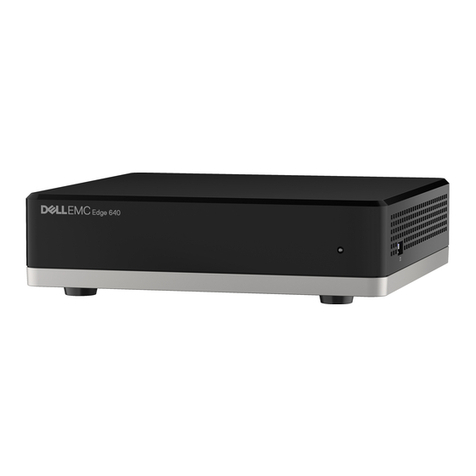
Dell EMC
Dell EMC SD-WAN Edge 600 Series Setup guide
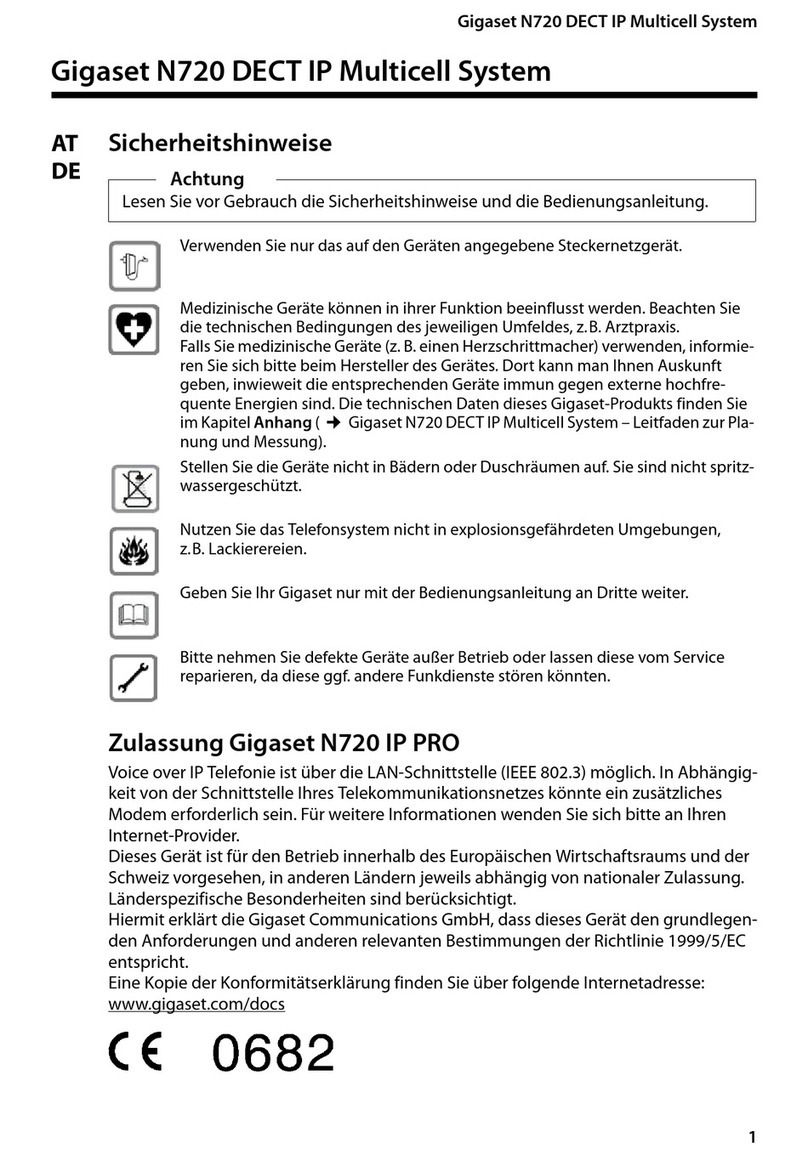
Gigaset
Gigaset N720 IP PRO Safety precautions
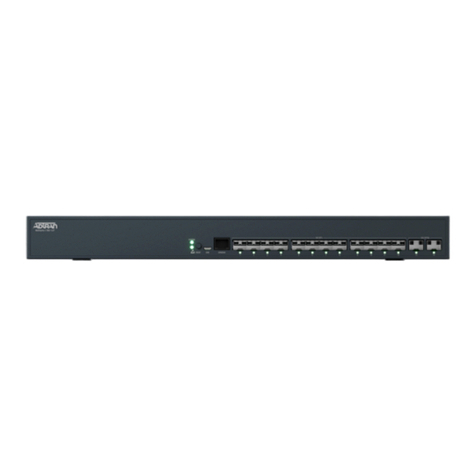
ADTRAN
ADTRAN NetVanta 1760-12F quick start
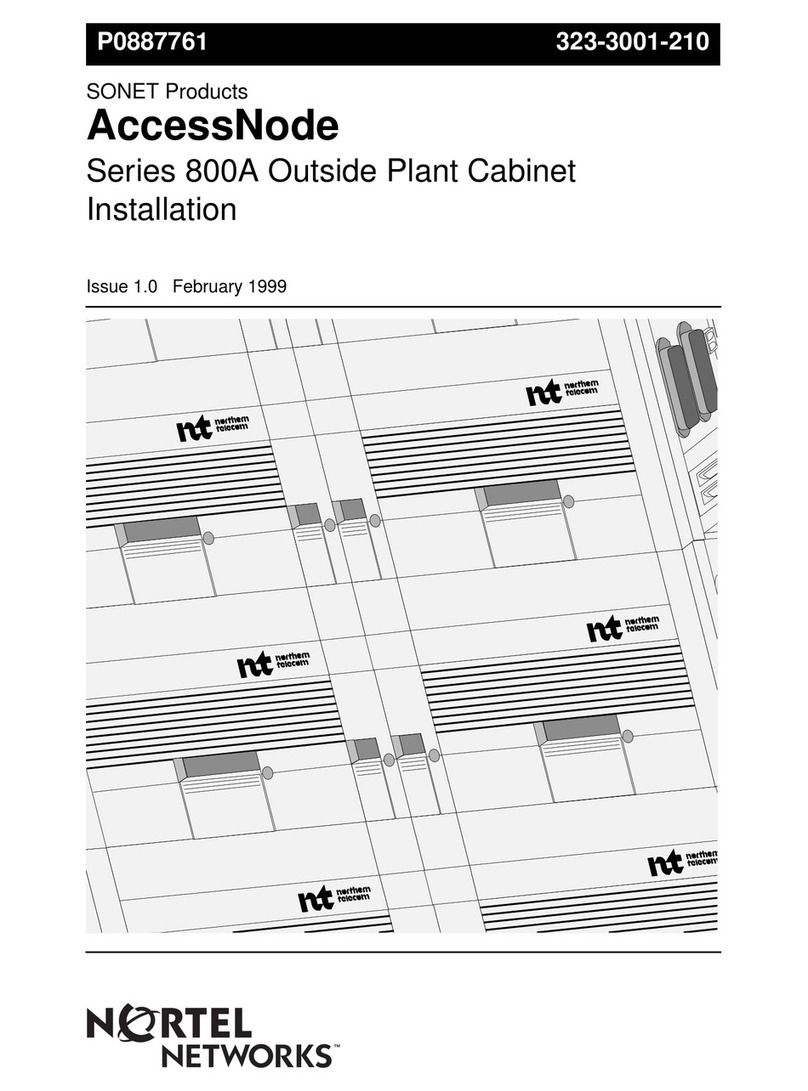
Nortel
Nortel SONET AccessNode 800A Series manual

Ascent Communication Technology
Ascent Communication Technology ACT AT5200 Quick reference guide
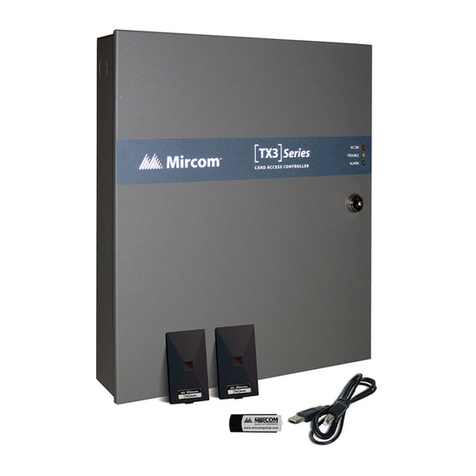
Mircom
Mircom TX3 Series Installation quick reference


